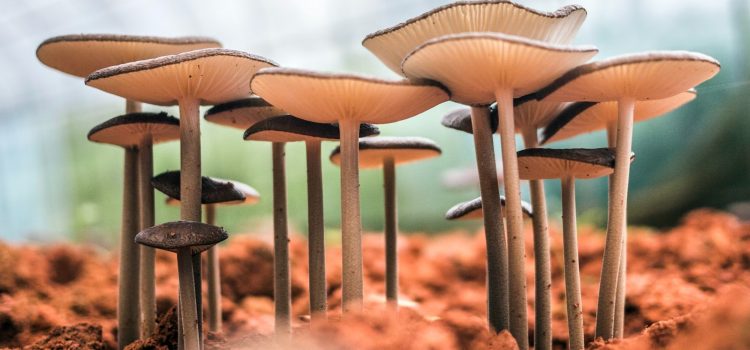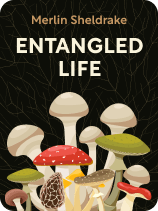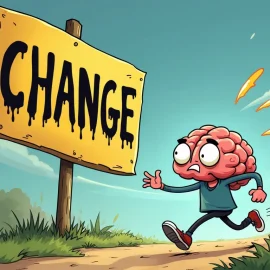

This article is an excerpt from the Shortform book guide to "Entangled Life" by Merlin Sheldrake. Shortform has the world's best summaries and analyses of books you should be reading.
Like this article? Sign up for a free trial here.
What are the main properties of fungi? What makes fungi different from plants and animals?
According to Merlin Sheldrake’s book Entangled Life, fungi are their own kingdom of organisms—they’re neither plants nor animals. Although the field of mycology (the study of fungi) is growing, Sheldrake argues that many aspects of fungal biology remain a mystery.
Below we’ll look at what we’ve learned from only the six percent of all fungi species we’ve explored, particularly its properties.
Fungal Biology
According to Sheldrake, fungi are understudied for two main reasons. First, fungi are hard to access because many of them live underground. Second, the study of fungi requires various types of biologists to collaborate since fungi’s lives are deeply intertwined with those of other organisms—but it’s rare for biologists to collaborate with researchers outside their own subfield (such as microbiology).
(Shortform note: Other biologists share Sheldrake’s view that fungi are understudied due to their underground habitat and the lack of collaboration among different biologists. They also identify another reason why fungi are understudied: Many fungi species are difficult to distinguish, and the technology needed to study their DNA is costly and requires extensive expertise.)
We’ll explore Sheldrake’s insights on what we know and don’t yet know about fungal biology. We’ve organized this information into six subsections, one for each property of life. Biologists generally agree that these are the six properties of fungi: organization, growth, response to stimuli, reproduction, energy processing, and homeostasis.
Property 1: Organization
All living things have internal organization—structures such as cells, roots, and organs that organize their matter. Sheldrake explains that the cell is the main structure in unicellular fungi, such as yeast. However, most fungi are multicellular organisms whose cells form larger structures.
(Shortform note: Some fungi are dimorphic: They switch between being unicellular yeasts and multicellular organisms. They make this switch in response to environmental changes, suggesting that this ability to transform is an adaptation that enables their survival.)In this section, we’ll explore three structures found in multicellular fungi. First, we’ll describe hyphae—long chains of cells surrounded by a cell wall. Then, we’ll examine two larger structures made of hyphae: mycelia (which typically grow underground) and mushrooms (which typically grow above ground).
Property 2: Growth
All organisms grow cells and larger structures according to genetic instructions. We’ll begin this section by examining the overall process of fungal growth. Next, we’ll explore two types of growth: branching and fusing. Finally, we’ll describe what mysteries still remain about this topic.
The Process of Fungal Growth
According to Sheldrake, multicellular fungi grow by lengthening their hyphal tips—the ends of their mycelia. By contrast, most other multicellular organisms grow by building layers of cells, like a 3-D printer. (Shortform note: Some organisms grow using an approach that resembles fungi’s lengthening approach and other organisms’ layering approach. For instance, a type of bacteria found in caves forms chains of cells (similar to hyphae), then it folds these chains into a three-dimensional structure that resembles a tangled mass of yarn.)
Furthermore, Sheldrake elaborates that fungal growth is both fast and forceful. Let’s further explore these two ideas.
Fungal growth is fast: Small packets containing the materials for cell growth travel through a fungus’s mycelium, arrive at a hyphal tip, and add new cells to the chain—at a rate of over five hundred packets per second.
Fungal growth is forceful: Fungi eat by digesting organic matter in their surroundings, so they need a method for inserting themselves into this matter. They use specialized hyphae that build up a high internal pressure so they can bust through cell walls.
Two Types of Fungal Growth: Branching and Merging
According to Sheldrake, when hyphae lengthen, they either branch into new territory or fuse with the fungus’s existing mycelium. Let’s further explore both types of fungal growth.
Branching: Sheldrake explains that mycelia branch radially from a spore (a fungi’s first cell). This radial branching allows a mycelium to expand into vast territories.
Fusing: Whereas branching is all about expanding a fungi’s territory outward, fusing is about creating a density of connections within a mycelium. When one hyphal strand fuses with another, it creates a shortcut, allowing materials (such as water and nutrients) and chemical signals (which we’ll explore later) to travel rapidly from one part of a fungus to another part.
What We Still Don’t Know
According to Sheldrake, many aspects of fungal growth remain a mystery. For instance, how do fungi organize their hyphae to become mushrooms? This question remains unanswered because an organism’s organization determines its growth, and fungal organization is unlike that of any other organism. Fungi form structures such as mushrooms using one type of cell—hyphal cells—whereas non-fungi form structures using multiple types of cells. Therefore, scientists have to develop new methods and models for understanding fungi growth.
Property 3: Response to Stimuli
All living things react to environmental stimuli, such as light and the presence of other organisms. According to Sheldrake, multicellular fungi’s responses to stimuli are closely connected to their growth, as outlined in these two steps:
Step 1: Expansion and investigation. As a mycelium radiates from its spore, its many hyphal tips sense stimuli it encounters. A single mycelium might contain between a hundred and a billion hyphal tips that can detect a range of stimuli, such as light and gravity.
Step 2: Directional growth. When a fungus’s hyphae sense a desirable stimulus (such as a nutrient source), its mycelium continues branching and merging its hyphae to surround that source. Meanwhile, it retreats from areas with no stimuli or undesirable stimuli (such as toxins).
Property 4: Reproduction
All life forms reproduce by replicating their DNA and passing it to the next generation. We’ll begin this section by outlining the multicellular fungi’s typical process for reproduction. Afterward, we’ll explore what mysteries remain about fungal reproduction.
The Steps of Fungal Reproduction
Step 1: Attraction. According to Sheldrake, fungi release sex pheromones (a chemical signal) to attract mates. (Shortform note: According to other researchers, fungal sex pheromones don’t only attract mates. These sex pheromones can also induce the creation of fungal sex organs—specialized hyphae that produce gametes (the equivalent of sperm and eggs).)
Step 2: Sex. After attraction, two fungi start having sex when a hypha from one mycelium fuses with the hypha of another. Their genetic material meets and combines in this fused channel. (Shortform note: We usually think of sex as something that happens between genetically different individuals. For a long time, scientists thought this was the only way organisms produced offspring with new genetic material. However, researchers recently discovered that this isn’t the only way of producing new genetic material: Some fungi clone themselves, have sex with their clones, and still manage to create new genetic material for their offspring.)
Step 3: Spore dispersal. After sex, one of the fungi grows flesh that develops into spores—cells containing the new genetic material. Then, this fungus disperses those spores. Although not all fungi use mushrooms for this step, Sheldrake focuses on describing several of the ways mushrooms spread spores:
- Explosive ejection: Some mushrooms eject spores into the air at high speeds. (Shortform note: Many of these mushrooms are able to achieve high speeds because they use fluid-filled tubes that shoot out spores, like a water gun.)
- Animal consumption: When animals eat mushrooms, they deposit the spores within their feces in a new location. (Shortform note: Conservation biologists sometimes measure spore levels in animal feces to predict the distribution of hard-to-find fungi.)
- Invasion: Some fungi invade organisms’ bodies. For example, Ophiocordyceps—the “zombie ant fungus”—infects an ant, manipulates its behavior so it crawls to an elevated location, then bursts from the ant’s head, showering its spores onto the forest floor.
What We Still Don’t Know
Although mycologists have uncovered many of the ways fungi reproduce, Sheldrake claims that some fungal species’ processes of reproduction remain shrouded in mystery. For instance, scientists have yet to observe the sex of the truffle, one of the most expensive edible mushrooms. Truffles currently only grow in the wild, so improving our understanding of truffle reproduction might make it possible to cultivate these sought-after mushrooms.
Property 5: Energy Processing
All organisms acquire energy to fuel their growth, reproduction, and other processes. Sheldrake explains that fungi, like humans and other animals, are heterotrophs: Instead of producing their own food (as plants do), they acquire energy by eating other organisms. However, unlike humans and other animals, fungi digest food outside their bodies by absorbing nutrients through their mycelia.
Throughout his book, Sheldrake highlights the variety of strategies fungi employ to access or ensnare food. In this section, we’ll explore two of these strategies: predation and symbiosis. Afterward, we’ll explore what mysteries still remain.
Property 6: Homeostasis
The last property of fungi is that they have strategies for maintaining homeostasis—a stable internal state—amidst changing environmental conditions (such as drops in temperature). Otherwise, organisms wouldn’t be able to maintain their structures, grow, respond to stimuli, reproduce, and process energy.
Sheldrake argues that fungi are uniquely well-adapted to maintaining homeostasis in extreme environments. Fungi have survived Earth’s five biggest extinction events and continue to thrive in extreme climates. Their hardiness is likely due to their ability to form symbiotic partnerships that enable them to survive conditions that would otherwise kill them.
According to Sheldrake, lichens exemplify fungi’s ability to survive inhospitable conditions. A fungus that is capable of lichenizing may exist on its own through stable environments, then it will form a lichen with photosynthetic algae and/or cyanobacteria when those environments become more extreme. For instance, lichens can endure long periods of dehydration and they can survive deadly doses of radiation in outer space.

———End of Preview———
Like what you just read? Read the rest of the world's best book summary and analysis of Merlin Sheldrake's "Entangled Life" at Shortform.
Here's what you'll find in our full Entangled Life summary:
- An examination of what we know and don't know about fungi
- How fungi can help solve many modern-day problems
- The three most important benefits of fungi






